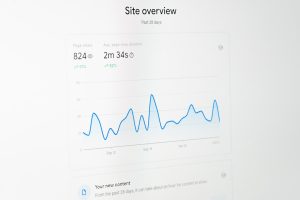
In the evolving world of software development, clarity and collaboration have emerged as cornerstones for building effective, user-friendly Application Programming Interfaces (APIs). A growing methodology that captures these principles is Docs-Driven Development (DDD). Unlike traditional approaches, where documentation is often an afterthought, Docs-Driven Development places API documentation at the forefront of the development process. It positions clear communication between teams and stakeholders as the foundation on which robust, scalable APIs are built.
This article delves into the concepts, advantages, and applications of Docs-Driven Development for APIs—a practice that’s shifting the paradigm from code-first to design-first strategies, ensuring every endpoint, parameter, and response format is thoroughly understood before a single line of code is written.
What Is Docs-Driven Development?
Docs-Driven Development is a practice where documentation is created before the actual implementation of the API. It functions as a contract between developers, stakeholders, and anybody who will eventually use the API. This contract outlines the desired behavior, request and response structures, endpoints, and error cases of the API. By agreeing on the documentation first, teams minimize ambiguity and reduce the risk of miscommunication later in the development lifecycle.
Often confused with code documentation or inline comments, DDD documentation is structured, often machine-readable, and is meant for both humans and systems. Tools like Swagger (OpenAPI), Postman, or API Blueprint are commonly used to draft these documents.

Why Docs-Driven Development Matters
There are several compelling reasons to adopt a Docs-Driven Development approach:
- Enhanced Collaboration: Teams from frontend, backend, product management, and QA can contribute to and consume API designs with clarity and shared understanding.
- Improved Planning: By drafting the documentation early, teams can anticipate use cases and refine the API design before it’s implemented.
- Parallel Development: With documentation in place, frontend and backend teams can work in parallel using mock responses.
- User-Centric Design: API consumers can validate the docs and provide early feedback, ensuring the resultant APIs are practical and easy to use.
- Automated Testing & Validation: API specifications written in formats like OpenAPI can be used to generate unit tests, mock servers, and even SDKs.
Core Principles of Docs-Driven Development
To practice Docs-Driven Development effectively, teams should follow these core principles:
- Design First, Code Later: Finalize the API design in documentation before implementing backend logic.
- Contract Agreement: Use the documentation as a living agreement between stakeholders. Changes should be versioned and approved.
- Machine-Readable Specs: Use structured formats like OpenAPI or RAML to enable automated tooling, such as client generation and API validators.
- Iterative Feedback: Share changes with all stakeholders regularly and incorporate their feedback to refine the API.
Tools Commonly Used in Docs-Driven Development
Several platforms and tools support the DDD lifecycle by making documentation creation and maintenance seamless:
- Swagger/OpenAPI: Provides a structured way to define APIs and comes with a suite of tools like Swagger UI and Swagger Editor for visualization and editing.
- Postman: Originally a testing tool, now supports API design, mock servers, and documentation hosting.
- Stoplight: A design-first API platform with collaborative editing and testing capabilities.
- Redoc: Offers elegant documentation rendering from OpenAPI specs.
- ReadMe: Combines markdown-based editing with OpenAPI spec support for interactive, user-friendly API documentation.

Benefits Across Teams
DDD benefits are not limited to the development team. Here’s how various stakeholders stand to gain:
- Product Managers: Can validate that the API functionality aligns with user stories and business requirements before development starts.
- Frontend Developers: Can begin building their applications using mock APIs or stub servers, often automatically generated from the docs.
- Test Engineers: Can write test cases based on documented behavior with greater confidence in API parameters and responses.
- End Users/Clients: Receive uniform, readable, and updated documentation as part of the final product, reducing friction in API adoption.
Implementation Workflow
Embracing Docs-Driven Development involves a slight shift in mindset and process. Here’s an example workflow for teams looking to implement DDD:
- Define Use Cases: Start by outlining the primary goals and functions of your API.
- Draft API Specs: Use structured documentation tools to create a first draft of the API endpoints, parameters, and responses.
- Review & Iterate: Collect feedback from all stakeholders and make necessary adjustments.
- Mock the API: Generate mock servers so that frontend and QA teams can begin work independently.
- Develop the Backend: Implement the logic to match the documentation and contract.
- Validate with Tests: Use the documentation as the basis for automated contract testing.
- Publish Docs: Share the final documentation with end users using platforms like Swagger UI or ReadMe.
Challenges and Considerations
No methodology is without tradeoffs. Docs-Driven Development is highly effective but presents its own set of challenges:
- Initial Time Investment: Creating detailed specs upfront may slow down early momentum.
- Keeping Docs in Sync: The documentation can become obsolete if changes in the implementation aren’t reflected back into the docs.
- Learning Curve: Tools like OpenAPI, while powerful, require understanding and training for effective use.
To mitigate these issues, it’s crucial to embed DDD into your CI/CD pipelines. Automation tools that lint and verify specs against code can enforce consistency across updates.
Real-World Use Cases
Companies like Stripe, Twilio, and GitHub have long realized the value of docs-first design. Their public APIs are often cited as benchmarks, both for functionality and documentation quality. In these cases, having a clear and shared understanding at the documentation level helped scale their developer ecosystems and improve product adoption.

Conclusion
Docs-Driven Development is more than just a technical trend—it’s a movement toward more transparent, inclusive, and efficient API design. By prioritizing documentation and stakeholder alignment up front, teams can produce APIs that are reliable, maintainable, and user-friendly from day one. Whether you’re a startup launching your first API or an enterprise optimizing your system interfaces, adopting DDD can significantly enhance both your development workflow and your product’s adoption rate.
FAQ
- Is Docs-Driven Development only for large teams?
No. Even small teams or solo developers benefit from the clarity and structure that DDD provides. It can help prevent misinterpretations and ease onboarding for future collaborators. - Do I need to use OpenAPI or Swagger for Docs-Driven Development?
While tools like OpenAPI are highly recommended due to their compatibility with many ecosystems, any structured and reviewable documentation format can be used effectively. - Can DDD be integrated with Agile methodologies?
Absolutely. In Agile sprints, drafting and refining API docs can be included in early backlog grooming or sprint planning sessions. Feedback loops make DDD a great fit for iterative development. - What if my API changes frequently?
Frequent changes can be managed through versioning and automation. Keeping docs version-controlled and integrated into your CI/CD process ensures accuracy and flexibility as APIs evolve.






